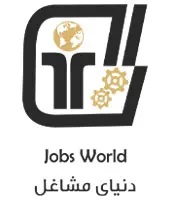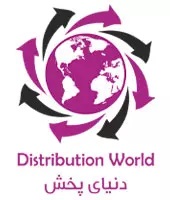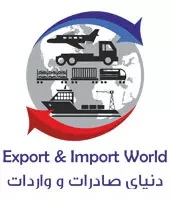Part 29) Distribution of products
Distribution systems are a chain of businesses or intermediaries through which a product or service reaches the customer. One of the most important concerns of customers and manufacturers is the right distribution of the product to the suitable place and target customers. Proper distribution of goods can be a competitive advantage of an economic enterprise compared to its competitors. Also, choosing the distribution channel and method of distribution of goods is one of the most important options that managers of economic enterprises and producers should consider; because distribution system of goods has a prominent and significant role in achieving the sales goals of manufacturers and exposes their products to buyers and consumers. When this is done correctly, positive results will be achieved. Broadcasting is the process of selling and offering a product or service to customers, which is an important part of a marketing strategy along with factors such as product price and promotion. Products and services are distributed through channels such as direct sales, e-commerce, retail locations, and partners. Distribution strategy may include several channels (by a separate pricing strategy for each), in the distribution strategy, it is common to use different methods of managing product partners. Broadcasting usually has a geographical element and it is common practice to use different channels for different regions, for example partners may be used to access international markets. There are two types of distribution channels, direct or indirect, in direct mode, the product reaches the consumer directly from the producer, but in indirect mode, the channel can be made up of various components such as wholesalers, distributors, agents or formed by retailers. Each intermediary receives the product from the previous intermediary at a certain price and sells it to the next intermediary at a higher price until it finally reaches the final consumer.
Considering the necessity of distribution of goods in the market, it can be concluded that the survival of a producer depends on distribution of its products. Usually, producers have two ways to distribute their goods; 1. Direct sale. 2. Using distribution of goods through independent distribution.
A-Distributing goods through independent distribution
Usually, factories and large production companies that produce a large volume of goods with reputable brands have an independent distribution network and have a more active presence in the market. Also, they make a huge profit from selling products for their factory and may pay exorbitant costs to distribute products and prove their brand position in the market. Of course, it should be noted that if the volume of production and the variety of producer brands are low, the risk of distribution of goods and return of money will increase and its costs will also increase. Also, the goal of producers is to design independent distribution systems for products, to be active in the market, to deliver products to the final audience, and to control the capital return status.
B-Distribution and distribution of goods through distribution companies
The advantage of and distribution of goods in this method is that it allows the producer to focus on the production of his products and leave the sale to the distributor.
A- Geographical area:
one of the important factors of distribution id geographical distribution. New World International Holding has a distribution system – 1 inside the country – 2 abroad (international).
- Internal distribution:
The internal distribution of New World International Holding has made it possible for production and service companies to introduce their goods or services throughout the country and Internal distribution by using the science of market analysis and management of the supply of goods and services in all parts of the cities and by employing experienced personnel to provide the best possible goods and services of the companies will lead to greater prosperity of the companies’ business and higher financial turnover than in the past. New World International Holding uses the capillary distribution management system inside the country to supply any goods and services in the country with the best quality and timing.
- Distribution outside the country (international)
International distribution of goods or services includes all management measures to analyze the market of the destination country and supply goods and services with the best quantity and quality in the destination country, as well as obtaining the necessary permits from the relevant authorities in origin and destination country. New World International Holding is the international distribution of all goods and services that can be supplied in other countries, especially neighboring countries such as Iraq, Turkey, Qatar, the United Arab Emirates, Oman, Kuwait, Azerbaijan, Armenia, Georgia, Russia and other countries such as European Union countries. North America, South America, Africa, Oceania, etc., by using the latest knowledge of the international market, as well as the accurate monitoring of the exchange rates of the countries. In order to facilitate distributing and to carry out accurate and regular broadcasting for production and service companies, New World International Holding is fully prepared to obtain the necessary licenses and distribute goods and services in international mode.
International holding areas, new world department:
- Middle East. 2. Central Asia (Afghanistan, Turkmenistan, Tajikistan, Uzbekistan, Kazakhstan, Kyrgyzstan). 3. East Asia. 4. Caucasus (Russia, Belarus, Georgia, Armenia, Azerbaijan) 5. Central Europe. 6. Eastern Europe. 7. Balkans. 8. North Africa. 9. Central and South Africa .10 North America .11 Central America .12 South America. 13 Oceania
B) Distribution process:
Distribution network is a system that distribution companies use to transfer products from the producer to the retailer and the final consumer. One of the main tasks of the distribution channels is to optimize the sales volume of the products, basically because Broadcasting companies distribute goods based on market research and different distribution networks, the risk of non-return of money is lower compared to other methods and the speed of transferring goods to the market and target audience increases. In addition, problems such as multiple customers and orders will decrease and distribution system will become more centralized. There are three types of process in a distribution channel: 1. Process of goods from the producer to the consumer. 2. Financial process from consumer to producer.
- Process of information in two directions.
Types of distribution channels:
Regarding that which intermediaries are included, distribution channel, can be one of the following four situations:
- Producer-consumer: This type of channel is the simplest and shortest type of distribution channel. It is the way that the producer sells his product directly to the consumer.
- Producer-retailer-consumer: This type of distribution channel has a new intermediary called the retailer, which can be chain stores. In this type of channel, the producer is no longer directly involved in sales and has taken the pressure off his shoulders. Instead, it can monitor distribution process from the outside.
- Producer-wholesaler- retailer- consumer: This type of channel is the most common type of distribution channel in which there are two intermediaries called retailers and wholesalers between the consumer and the producer. This type of distribution channel is suitable for producers who have the low financial ability and limited products.
- Producer-agent-wholesaler-retailer-consumer: This type of distribution channel is the longest type of channel in which three intermediaries are involved and is suitable for wider distributions with a variety of products and presence in various markets.
C) Distribution models:
The most common distribution systems for goods and services are:
- Chain stores.
- Capillary distribution.
- Banked distribution (wholesale).
- Electronic (with/out intermediaries).
- Selective distribution of goods.
- Time stores
We explain each of the models in details:
- Chain stores:
There are countless chain stores all over the world, of which you have undoubtedly heard many of them. Chain stores with the same brand name are actually run under the supervision of a single management and usually offer similar products. In fact, chain stores in Iran and other countries of the world. In order to reduce distribution costs, reduce the price of products and also reduce commuting in cities.
The most important and famous internal chain stores are:
1- Ofogh Koroush chain store.
2- Etka chain store.
3- Shahrvand chain store.
4- Haft chain store.
5- Janbo chain store.
6 – Yas chain store.
7- Hyperstar chain store,
8- Refah chain stores.
9 – Hyper family store chain.
The top chain stores in Europe are:
1- Schwartz chain store (Lidl and Cafoland), Germany
2- Carrefour chain store, France
3- Aldi chain store, Germany
4- Tesco chain store, England
5- Edca chain store, Germany
6- Ruh chain store, Germany
7- Auchan chain store, France
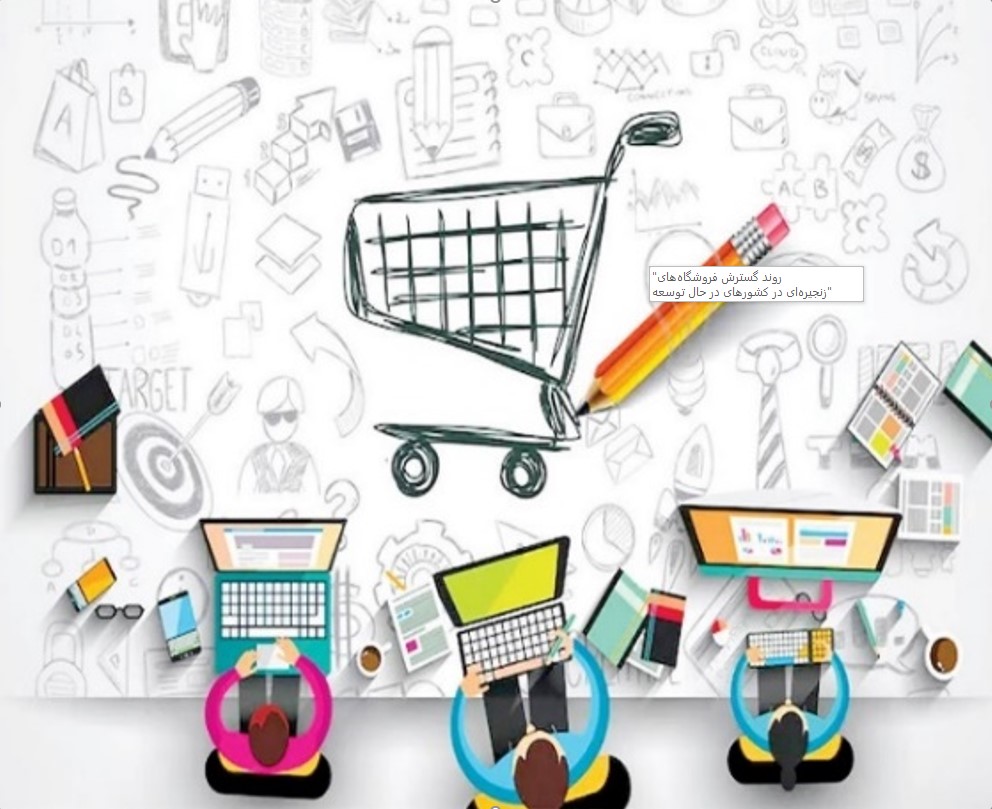
Advantages and disadvantages of chain stores:
Growth of chain stores began in the early 20th century in developed countries, but in developing countries, a trend called the “supermarket revolution” was formed in the early 90 decade, which actually refers to the creation and expansion of modern retail stores including chain stores. It has different forms such as supermarkets, hypermarkets and other retail stores that have almost the same requirements as supermarkets.
Currently, supermarkets have gone beyond the initial concepts and in many countries, due to the customers of the middle class of the society, they have a major volume of the supply of goods in the market. The effects of this growing process of chain stores in the system of goods distribution, especially food stuff is not only affected in traditional retail stores, but also affected other companies active in the supply of goods, and even wholesalers, processors, and even producers of agricultural section, especially farmers. In fact, the supermarket revolution has acted like a double-edged sword, so that on the one hand, it has reduced the price of many goods, especially food, for consumers, and it has created new opportunities for producers and those involved in the processing of goods to reach the markets of quality goods and have more access and thus achieve more incomes; on the other hand, it creates challenges for retailers, producers and retail processors, because they are not mainly prepared to face the requirements related to these supermarkets and new competitive conditions.
2- Capillary distribution
Capillary distribution is a partial system that is distributed through distribution channels similar to the capillaries of the human body. By the help of this system, producers can eliminate middlemen in the market and deliver the produced products to the final consumers as quickly as possible. Capillary distribution reduces the distance between producers and consumers and reduces the cost of goods. Also, with the help of this system, more market coverage can be created, because producers with the help of capillary distribution system are known in the market for a longer period of time.
Types off distribution:
1- Cold distribution: in the first stage, a person visits the store as a visitor and starts visiting and ordering with his tools. Then, after sending the request to the distribution company, the agent delivers the distribution of the order to the store.
2- Warm distribution: in this type of distribution, the distribution agent and the visitor are the same person, in this way that the visitor starts visiting and ordering the products in his car by hitting the stores with his device. After registering the order for the products, it delivers the needs of the store to the store at the same moment.
Advantages of capillary distribution:
1- Gathering more accurate and up-to-date information from the market
- More market coverage
- Wider communication with customers
- Reducing the risk of losing customers
- Reducing the cost of money
- Increasing the bargaining power of the company
- Reducing the probability of new competitors
- Reducing the possibility of selling below the price
- Constant process of liquidity
- Possibility of delegating more authority to branches
- Capillary distribution of the way to victory over competitors
- More and better work order
- Reducing the risk of bankruptcy.
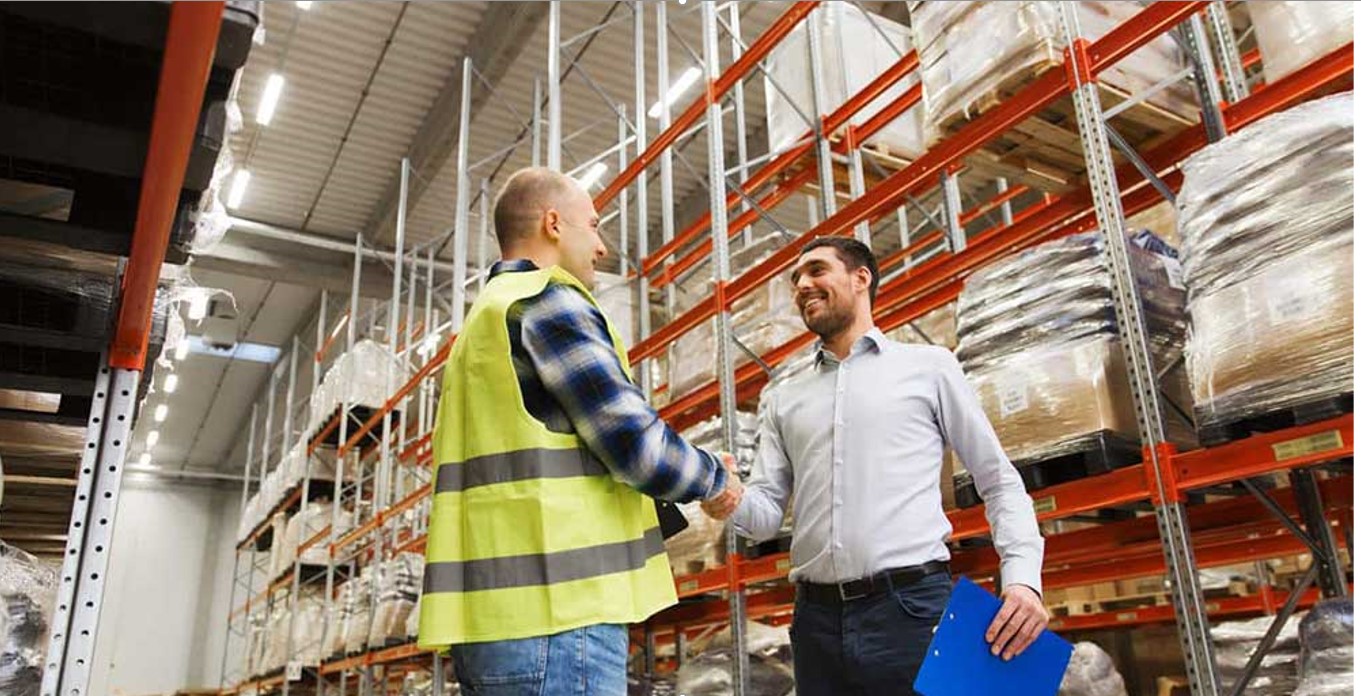
Challenges of capillary distribution
1- Capillary distribution is very expensive and extensive, which requires ideal management, and sometimes the lack of ability to manage may cause problems for you.
2- It is not possible to distribute capillaries in some places due to their impassability or other reasons.
3- In capillary distribution, there is a possibility of degrading the product. Degrading the product means that the product is sold at a price much lower than its actual price. This issue is usually formed due to the competition that is visible in the field of sales and the producers offer a lower price to the sellers to buy their goods.
4- Market irregularities sometimes allow companies to control how goods are distributed.
5- Since most of the payments in capillary distribution are credit installments and are done by means of checks, there is a possibility of delay in payment and bounced checks, and it can be a lot of trouble (especially when dealing with different sources)
6- Some producers put capillary distribution in charge of special individuals or institutions, which in this case are deprived of the possibility of monitoring, and practically they leave the structure of capillary distribution, and this issue can be very dangerous.
7- A capillary distributor is supposed to compete with many major distributors in addition to competing with its competitors, and if it cannot attract stores or contacts, it will easily lose the sales market, especially in a situation where the import of goods is very high. It is widespread and if the said import is through smuggling, we will have a much more miserable situation.
3- Banked distribution and distribution of goods through wholesale distribution networks
Wholesalers buy large quantities of products from distributors and manufacturers. Wholesalers see retailers as their main customers. Typically, buying in high volume increases the power of wholesalers. Some of the purchased items are also given discounts. In this type of system, the distribution costs are usually lower and the cost price of the product is also reduced. One of the disadvantages of this type of system is the selling price of the product, which is usually lower than the actual price; as a result, this causes the product pricing to be overshadowed in the market as a whole. Also, another disadvantage of this system is the lack of control of manufacturing companies on distribution of goods in the whole market and retail stores, which are practically unaware of the mechanism of distribution of goods.
4- Electronic (Internet stores, influencers)
Any sale that is done through the virtual space with or without an intermediary is known as electronic sales.
A) Direct sale of goods “Internet store”
Is a type of product sale where customers purchase the products they need through Internet websites. In this type of system, manufacturers, wholesalers and retailers are the main operators of the brands and distributors. Customers (products buyers) choose the product they want by referring to the website and after checking its specifications and features, they place an order for that product. The orders will be sent to the customer after the final review by the relevant officials. It is possible to send the goods. According to the volume and size of the product and the distance of the customer, one of the advantages of this type of system is the comparison of the price and quality of different products, which leads to an increase in customer satisfaction. Today, online sales and distribution of goods is growing rapidly and it has become popular all over the world
B) Selling goods through “influencers”
In this method, products advertisement is assigned to influencers, which ultimately leads the consumer to the desired online store and purchase the product mentioned in the advertisement. This type of sale is called electronic sales.
- Selective distribution of goods
By means of this system, the concentration of product sales can be limited to a geographical area with a series of specific goods. One of the advantages of this method is that the producer can select the best geographical area or the most consumed and best-selling goods for sale. Choose products and focus your best performance on that product or area.
An example of this type is the Hodka department, which only focuses its sales on items needed by hotels, restaurants, and coffee shops, or there are departments that only distribute special products in 3 neighboring provinces and provide the best services to those 3 provinces.
- Chronological sale
Some goods can be distributed in certain time periods and the ability to store and sell them during all times cannot be envisaged. So, we can mention the sale of some seasonal fruits that must be delivered to domestic or foreign market and to be sold as soon as possible. Chronological sale is difficult, fast and costly sale and cannot be handle by every distributor. How much successful the producer is in distribution system of his goods, he will also be more successful in other sections and strategies. Moreover, by progress of industry in Iran and the world, the producers’ thinking is directed towards increasing welfare and paying attention to consumers.
Design and selection of distribution network will be successful if it is selected in a comprehensive and long-standing distributing company to fulfill the needs of consumers and producers.
Department of New World International Holding has the strongest distribution fleet and the most efficient distribution administrative and personnel system inside and outside the country. We can be good producers of all industrial, food, cosmetics, pharmaceutical, service, technology, etc. Timely return of your capital and profit, high sales and visibility of your product is our claim.
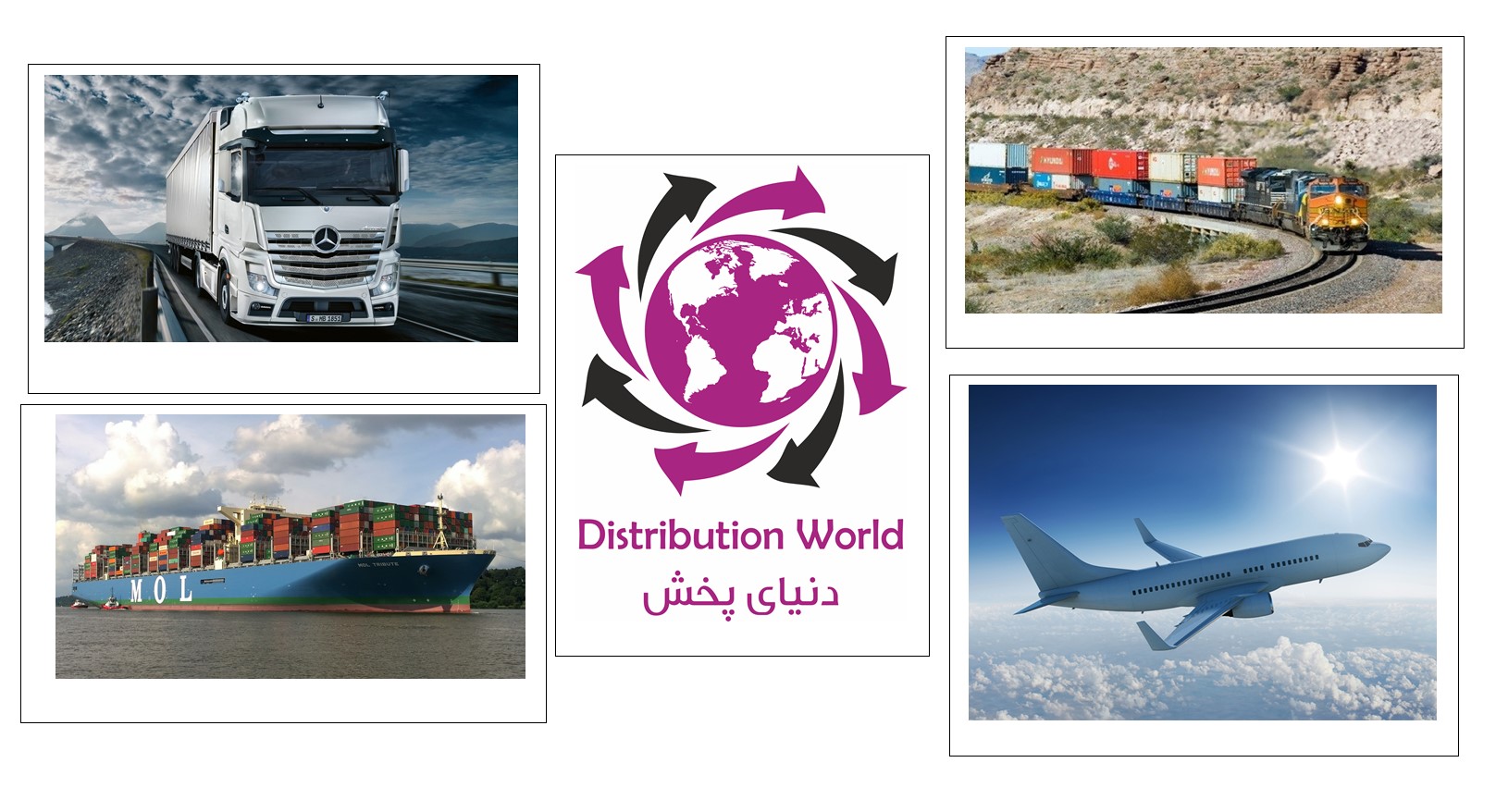
Products categories
- Services
- Chapter1 -Consulting and Marketing
- Chapter2 - Designing, Photography, Filmmaking
- Chapter3 - Printing, Packaging, Post-print
- Part 5: Printing projects and related industries
- 5.1) Lithography
- 5.2) Offset printing
- 5.3) Digital printing
- 5.4) Printing PVC sheets
- 5.5)3D printing
- 5.6) Metallization printing
- 5.7) Talaq Printing
- 5.8) Print on fabric
- 5.9) Printing and burning CD
- 5.10) CNC and laser printing (engraving)
- 5.11) Gold blocking-hot stamping-embossed stamping
- 5.12) Tampo printing
- 5.13) Silk printing
- 5.14) Printing on metal
- 5.15) Printing on stone
- 5.16) Thermal printing
- 5.17) Roll printing
- 5.18) Large format printing
- 5.19) Seal and gelatin
- 5.20) Types of coatings
- 5.21) Molding
- 5.22) Stamping
- 5.23) Sticky box
- 5.24) Assembly
- 5.25) Post-press services
- 6. Technical office services
- 7. Binding
- part 8 - Holograms and Types of Labels
- 9. Packaging industries
- 9.1 Box
- 9.2 Board cover
- 9.3 Plexi boxes & Vaccum Forming
- 9.4 Fantasy boxes
- 9.5 Laminate and inner cover
- 9.6 Carton
- 9.7 Shrink
- 9.8 Air bubble nylon
- 9.9 Disposable food containers
- 9.10 Plastic containers
- 9.11 General format
- 9.12 Board can
- 9.13 Jar glass containers
- 9.14 Manufacturing sacks and industrial packets
- 9.15 Manufacturing and selling machineries
- 9.16 Food container
- part 10 - Shopping bag
- Part 5: Printing projects and related industries
- chapter4:Environmental Advertising and Exhibition Services
- Chapter 5 - Audiovisual Advertising and Electronic Marketing
- Chapter 6 - Advertising gifts
- part 24- Advertising gifts
- 24.1 Stationery
- 24-2 Stationary set
- Main brand stationary set
- Stationary set of CROSS brand
- Stationary set of SHEAFFER brand
- CANDID
- GHANARY desktop set
- Stationary set of WATERMAN
- Stationary set of PARKER
- Stationary set of HANSA
- Stationary set of PORTOK
- Stationary set of MELODY
- Stationary set of EUROPEN
- Stationary set of DIPLOMAT brand
- Stationary set of PIERRE CARDIN brand
- Miscellaneous brands' set (pen – fountain pen)
- Main brand stationary set
- 24.3 Card case
- 24.4 Keychain
- 24.5 Lighter
- 24.6 Ashtray
- 24.7 Main clothes (advertising cloth)
- 24.8 Subsidiary clothes
- 24.9 Advertising hat
- 24.10 advertising towel
- 24.11 Advertising cover
- 24.12 Advertising radio
- 24.13 Advertising clock and wristwatch
- 24.14 Advertising mug mat
- 24.15 Advertising mouse pad
- 24.16 Advertising car sunshade
- 24.17 Leather artifacts
- 24.18 Advertising document cover
- 24.19 Advertising folder and writing pad
- 24.20 Advertising index file and Zoonckan
- 24.21 Advertising bag and wallet
- 24.22 Advertising balloon
- 24.23 Advertising ruler
- 24.24 Advertising puzzle
- 24.25 Children's advertising gifts
- 24.26 Postcard
- 24.27 Advertising magnet (magnetic stickers)
- 24.28 Plexi file and bag
- 24.29 Advertising tissue and tissue box
- 24.30 Sculpture-pottery-tile
- 24.31 Advertising containers
- 24.32 Calculator
- 24.33 Office papers-fantasy paper-notepad
- 24.34 Lighting advertising gifts
- 24.35software gift
- 24.36 Advertising photo frame
- 24.37 Advertising photo album
- 24.38 Handicrafts
- 24.39 Special religious gifts
- 24.40 Doll making
- 24.41 Advertising tools
- 24.42 Women's special gifts
- 24-43) mobile accessory
- 24.44 Electronic gifts
- 24.45 Advertising hand fan
- 24.46 Special medical gifts
- 24.47 Advertising opener
- 24.48 Advertising (woven) carpet tableau
- 24.49 Advertising desktop set
- 24.50 Advertising air freshener
- 24.51 Umbrella
- 24.52 Advertising meter
- 24.53 Advertising tape dispenser
- 24.54 Optical advertising gifts
- 24.55 Advertising compass
- 24.56 Advertising thermometer
- 24.57 Automobile advertising gifts
- 24.58 Special gifts
- 24-59) Wooden promotional gifts
- part 25 - 26 - Almanac and telephone directory
- 27. Calendar
- part28- 27.1 Exquisite books
- part 24- Advertising gifts
- Chapter 7- The world of distribution
- Chapter 8- Export and Import
Online price inquiry
"*" indicates required fields
Quick access
- Chapter1 - Consulting and Marketing
- Chapter2 - Designing, Photography, Filmmaking
- Chapter3 - Printing, Packaging, Post-print
- Chapter4 - Environmental Advertising and Exhibition Services
- Chapter5 - Audiovisual Advertising and Electronic Marketing
- Chapter6 - Advertising gifts
- Chapter 7- The world of distribution
- Chapter 8- Export and Import


